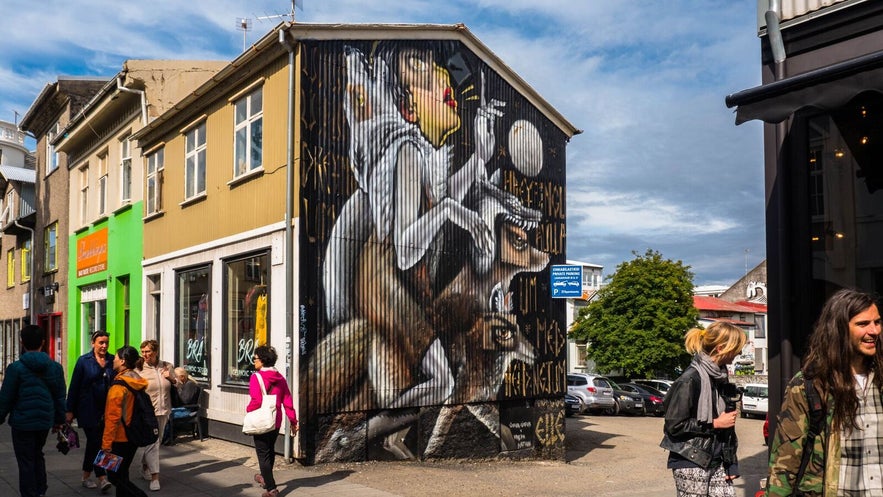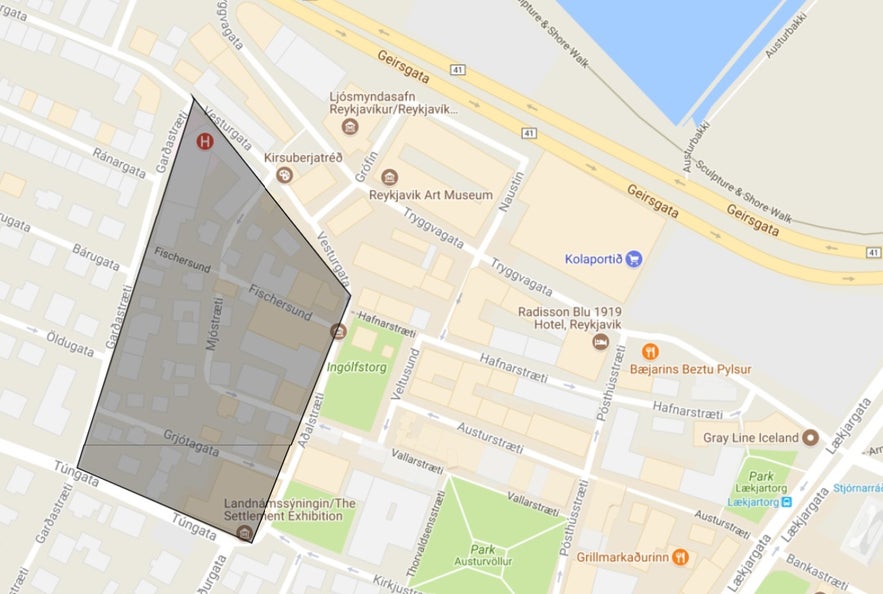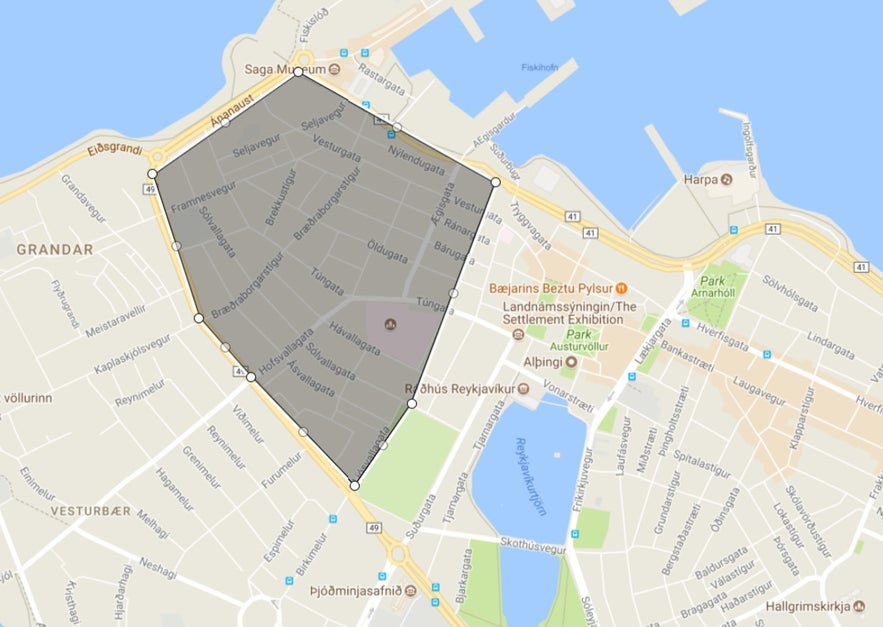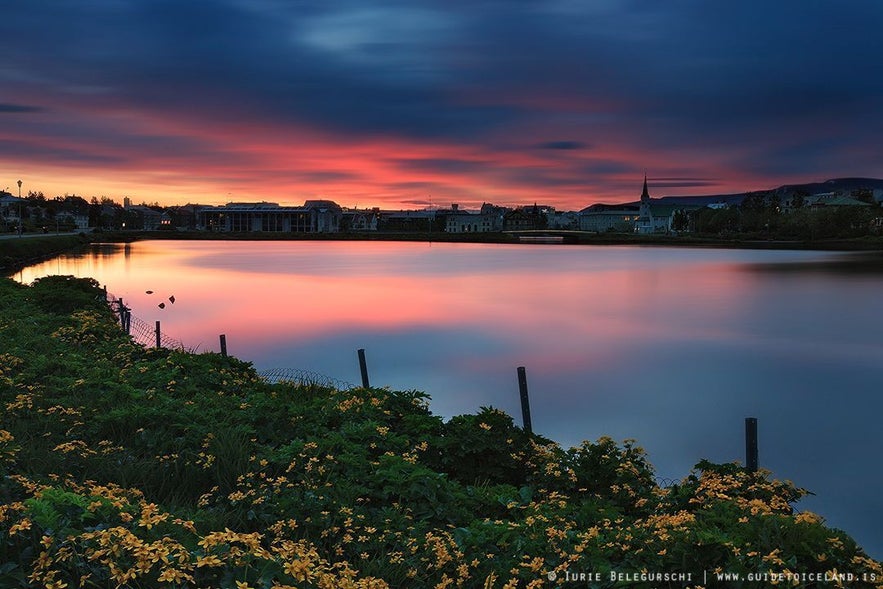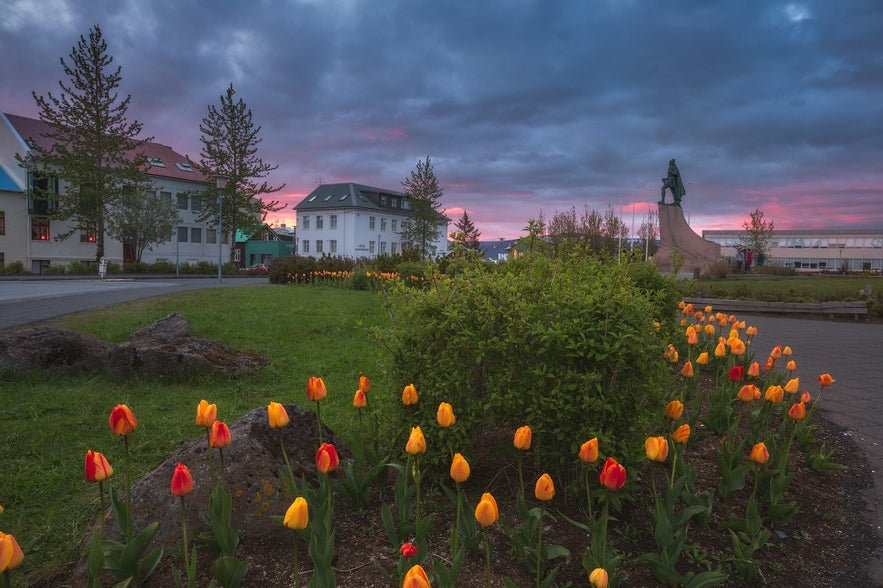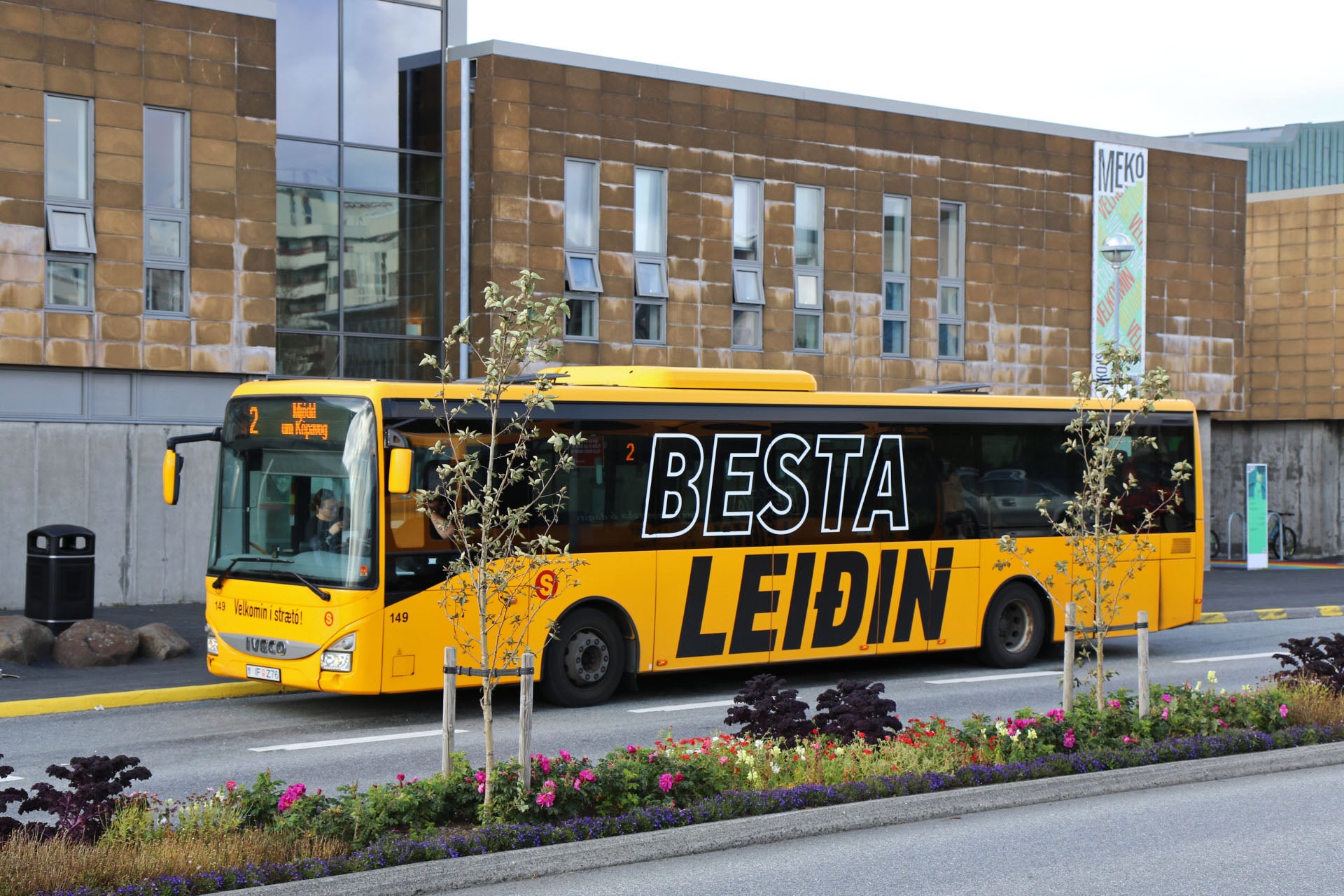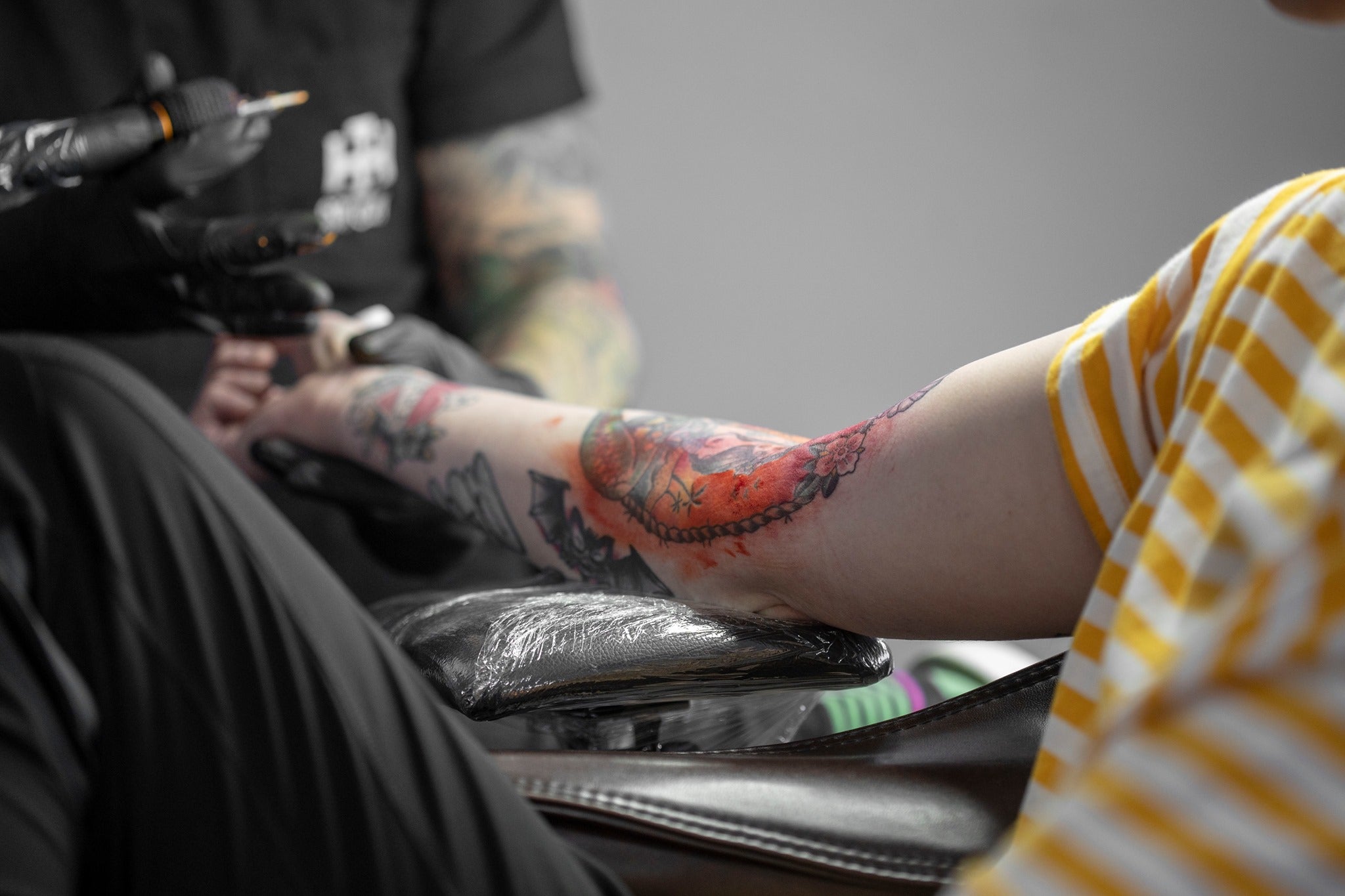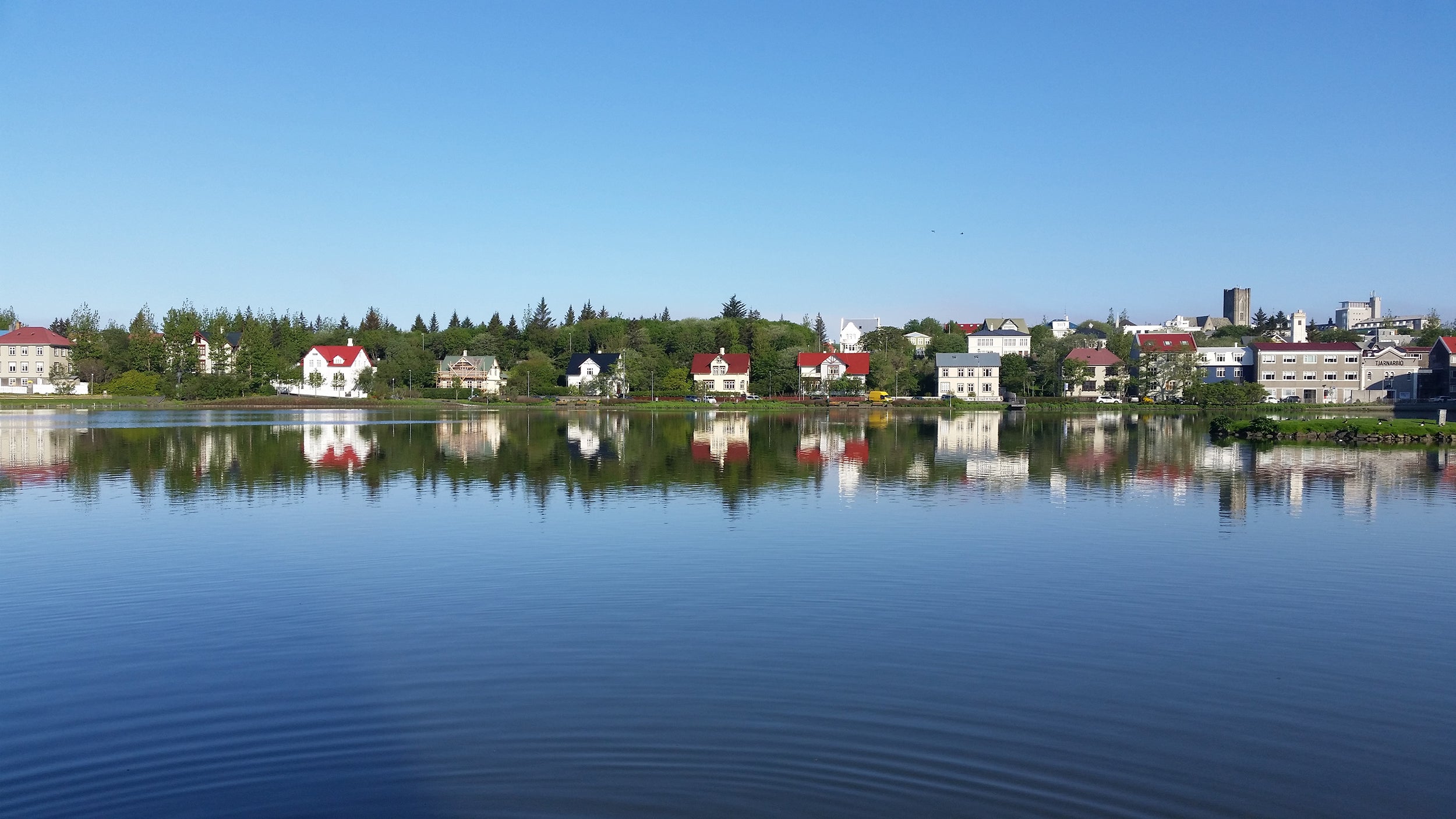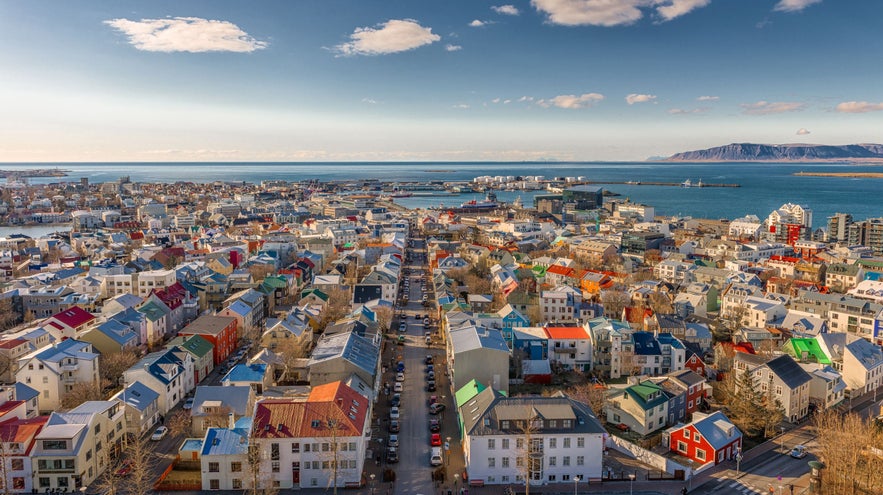
Downtown Reykjavik is the heart of Iceland’s capital city. While Reykjavik may be small compared to other capitals, it offers a unique blend of culture, history, and charm that draws visitors from around the globe. There are endless things to do in Reykjavik, and when you want to explore more, plenty of tours from Reykjavik that will take you beyond the city.
The colorful streets of 101 Reykjavik, the postal code that unifies the downtown district, are filled with character. It’s also where you’ll find many of the top accommodations in Reykjavik. Iconic landmarks like Hallgrimskirkja Church and Harpa Concert Hall make this area a must-visit destination.
Why You Can Trust Our Content
Guide to Iceland is the most trusted travel platform in Iceland, helping millions of visitors each year. All our content is written and reviewed by local experts who are deeply familiar with Iceland. You can count on us for accurate, up-to-date, and trustworthy travel advice.
Though Reykjavik is not a sprawling metropolis — with a population of under 250,000 — this northernmost capital boasts an incredibly lively downtown. Booking Reykjavik walking tours is a great way to discover the city's unique character.
Whether you’re interested in shopping along Laugavegur Street, exploring with Reykjavik tours, enjoying local cuisine, or simply soaking in the city’s rich history, downtown Reykjavik has something for everyone. If you're a customer of Guide to Iceland, you can enjoy some exclusive VIP Club offers and discounts in restaurants, bars, and shops in the area.
In this guide, we’ll take you through the must-see neighborhoods and the best spots to experience the true essence of downtown Reykjavik and more.
Key Takeaways
-
Reykjavik’s origins date back to 870 AD when Ingolfur Arnarson established the first settlement. The city flourished around its harbor in the 18th century.
-
The city center comprises various neighborhoods, each with its unique character.
-
Iconic sites such as Hallgrimskirkja church and Harpa Concert Hall are situated in the heart of Reykjavik.
-
The city center offers diverse dining options, from traditional Icelandic fare to international cuisines, catering to a wide range of palates.
- See the Top Things to Do in Reykjavik
- Get to know the Best Shops in Reykjavik
Main Attractions to See in Reykjavik
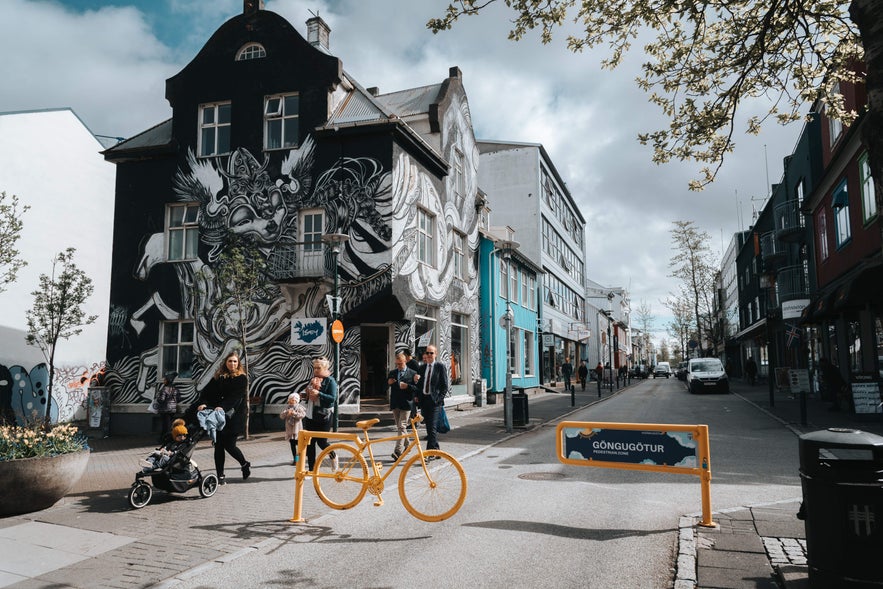 Reykjavik is a city full of charm, history, and unique experiences. Whether you're interested in culture, nature, or architecture, there’s something for everyone. Here are five must-visit attractions:
Reykjavik is a city full of charm, history, and unique experiences. Whether you're interested in culture, nature, or architecture, there’s something for everyone. Here are five must-visit attractions:
5. Harpa Concert Hall
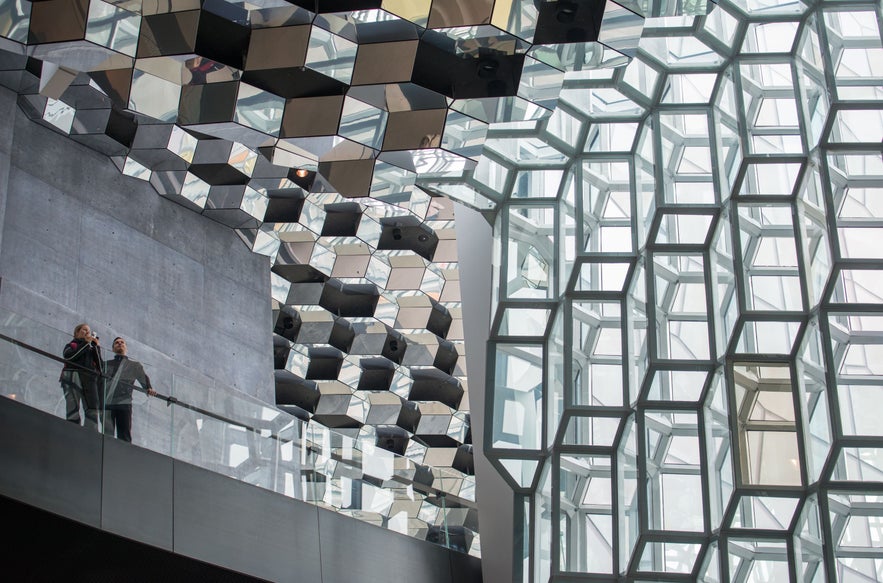 A masterpiece of modern architecture, Harpa is not only a cultural hub for music and events but also a stunning glass building that reflects the city’s natural beauty. It's also home to two excellent restaurants, shops like Rammagerdin, and experiences like the Volcano Express.
A masterpiece of modern architecture, Harpa is not only a cultural hub for music and events but also a stunning glass building that reflects the city’s natural beauty. It's also home to two excellent restaurants, shops like Rammagerdin, and experiences like the Volcano Express.
4. Sun Voyager
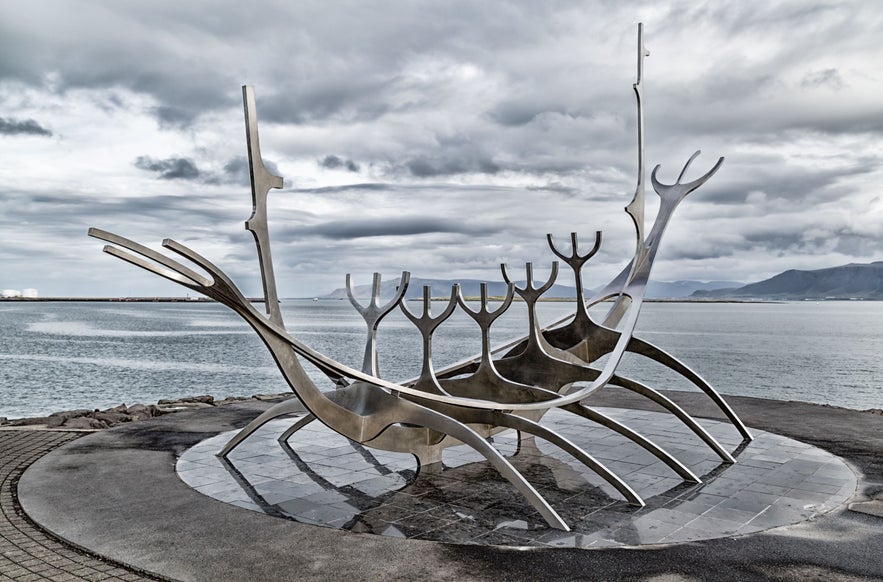 Located along Reykjavik’s scenic waterfront, the Sun Voyager is a striking steel sculpture that symbolizes adventure, freedom, and discovery; it offers visitors a perfect photo opportunity with sweeping views of the ocean, nearby mountains, and often breathtaking sunsets.
Located along Reykjavik’s scenic waterfront, the Sun Voyager is a striking steel sculpture that symbolizes adventure, freedom, and discovery; it offers visitors a perfect photo opportunity with sweeping views of the ocean, nearby mountains, and often breathtaking sunsets.
3. Perlan
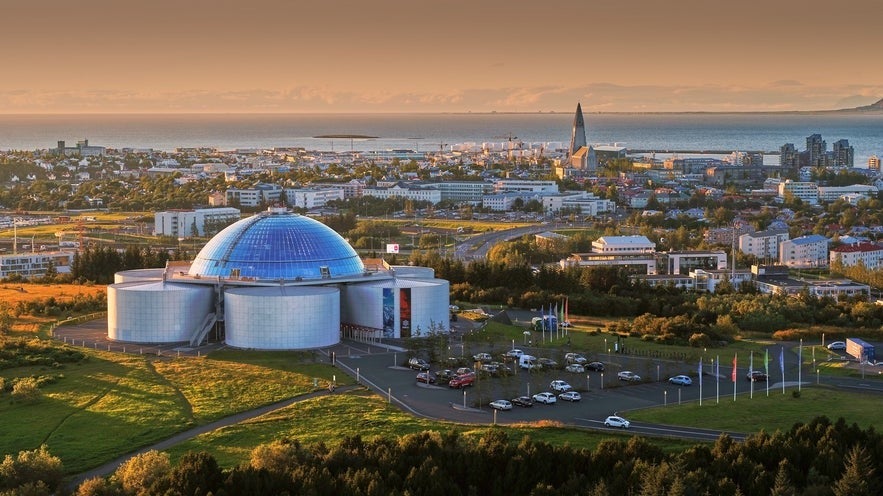 The Perlan, with its futuristic glass dome, offers an interactive museum showcasing Iceland’s natural wonders and a northern lights planetarium. It has an observation deck that provides panoramic views over Reykjavik, the surrounding mountains, and the ocean. To fully experience its exhibitions and breathtaking vistas, travelers are encouraged to book Perlan tickets in advance.
The Perlan, with its futuristic glass dome, offers an interactive museum showcasing Iceland’s natural wonders and a northern lights planetarium. It has an observation deck that provides panoramic views over Reykjavik, the surrounding mountains, and the ocean. To fully experience its exhibitions and breathtaking vistas, travelers are encouraged to book Perlan tickets in advance.
2. National Museum of Iceland
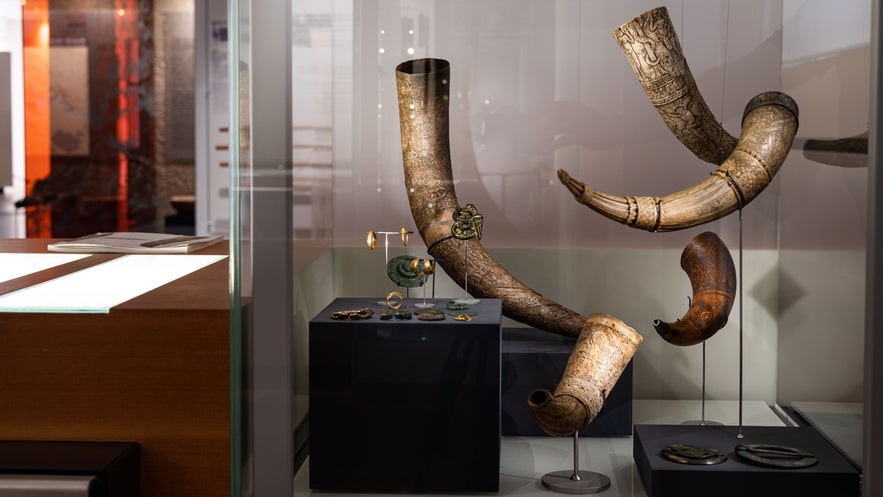 For a deeper understanding of Iceland’s rich history and heritage, the National Museum of Iceland features captivating exhibits. You'll embark on a journey from the Viking Age through centuries of culture, art, and daily life, culminating in the present day, providing insight into the nation's formation.
For a deeper understanding of Iceland’s rich history and heritage, the National Museum of Iceland features captivating exhibits. You'll embark on a journey from the Viking Age through centuries of culture, art, and daily life, culminating in the present day, providing insight into the nation's formation.
1. Hallgrimskirkja Church
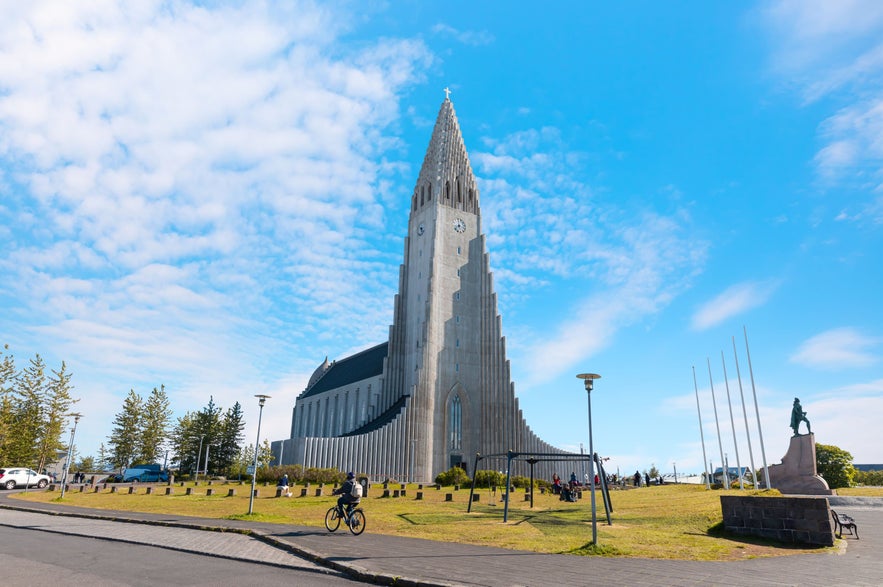 Hallgrimskirkja, one of Reykjavik’s most iconic landmarks, features a striking design inspired by Iceland’s basalt columns and volcanic landscapes. Visitors can take an elevator to the top of its tower for a small fee, enjoying breathtaking panoramic views over the city, mountains, and coastline.
Hallgrimskirkja, one of Reykjavik’s most iconic landmarks, features a striking design inspired by Iceland’s basalt columns and volcanic landscapes. Visitors can take an elevator to the top of its tower for a small fee, enjoying breathtaking panoramic views over the city, mountains, and coastline.
Local Favorite Places to Try in Reykjavik
Reykjavik's city center boasts a vibrant dining scene, offering a variety of local restaurants and bars that cater to diverse tastes. Here are some of the best bars and restaurants in Reykjavik to include in your itinerary.
Prikid
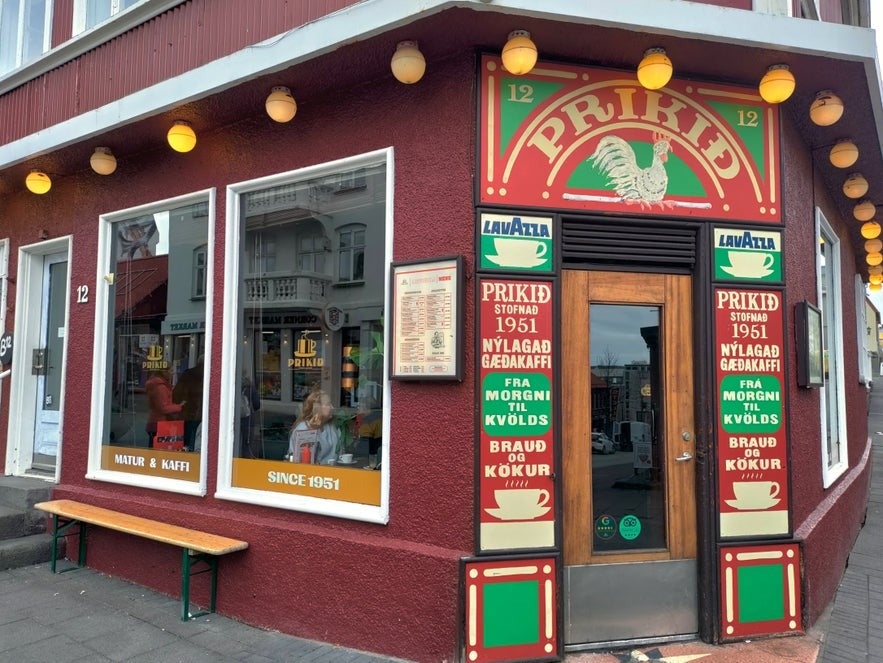 Established in 1951, Prikid is one of Reykjavik's oldest and most iconic cafes. During the day, it's a great spot for brunch, lunch or afternoon coffee while people-watching, but during the night, it transforms into one of the best places to party in Reykjavik!
Established in 1951, Prikid is one of Reykjavik's oldest and most iconic cafes. During the day, it's a great spot for brunch, lunch or afternoon coffee while people-watching, but during the night, it transforms into one of the best places to party in Reykjavik!
It's a beloved spot for both locals and visitors seeking an authentic Reykjavik experience.
Lemmy Bar and Live Music Venue
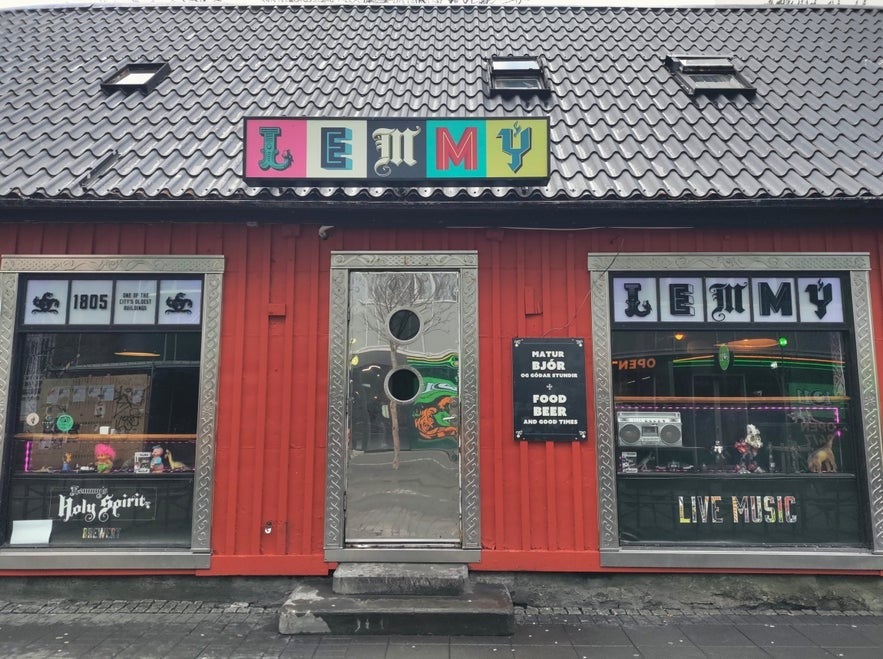 Located in one of Reykjavik's oldest buildings at Austurstraeti 20, Lemmy Bar and Live Music Venue is a distinctive bar and restaurant known for its unique "rock" atmosphere. It features the only true beer garden in Reykjavik, with over 50 beers on tap, making it an ideal spot for dining and socializing.
Located in one of Reykjavik's oldest buildings at Austurstraeti 20, Lemmy Bar and Live Music Venue is a distinctive bar and restaurant known for its unique "rock" atmosphere. It features the only true beer garden in Reykjavik, with over 50 beers on tap, making it an ideal spot for dining and socializing.
The menu offers a variety of dishes, and the establishment has received excellent reviews for both its food and atmosphere.
Monkeys Food and Wine
Monkeys Food and Wine is a contemporary dining establishment located at Klapparstigur 28-30. It has a delicious mix of Japanese and Peruvian cuisine and is likely one of the most aesthetically pleasing restaurants you'll ever visit. They share a space with the renowned Kokteilbarinn bar, so you also have plenty of delicious cocktails to choose from.
Its central location makes it a convenient choice for those exploring the city center.
- See also: Nightlife in Reykjavik
Laugavegur, Bankastraeti and Austurstraeti Streets
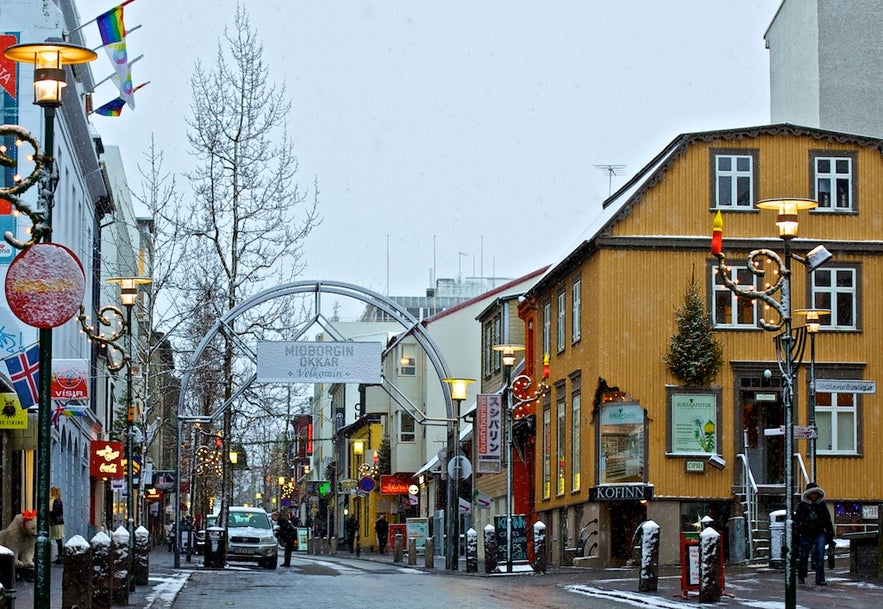 Photo from Wikimedia, Creative Commons, by joseph knecht. No edits made.
Photo from Wikimedia, Creative Commons, by joseph knecht. No edits made.
The Laugavegur Shopping Street is where it all begins. Connecting seamlessly with its sister streets, Bankastraeti Street and Austurstraeti Street, this route is a pathway of local culture that every visitor to Iceland has to walk at least once.
It has plenty of shops, restaurants, galleries, cafes, bars, and homes, and serves as the very artery of the capital.
You'll want to stop by locations like the iconic Te & Kaffi coffee house, the Icelandic outerwear store 66° North, and the lively Lebowski Bar. Don't miss out on the delicious pastries or pizza at BakaBaka and explore all the other bars and restaurants in the area.
These establishments are often in the same building. This means that a single house can host a restaurant that turns into a club come nightfall, while the upper levels might be residential apartments.
The Reykjavik Poverty Committee originally commissioned the street in 1885 to combat unemployment. At the time, Laugavegur served as the way to reach the industrial harbor town from the countryside.
Consequently, the locals started setting up shops and services along the route to catch potential customers before they reached the larger stores by the seaside.
But, when the U.S. Armed Forces occupied Iceland at the end of World War II, they created a demand for nightlife and entertainment. Soon enough, bars started popping up downtown, showing locals the benefits of drinking, dancing, and eating out.
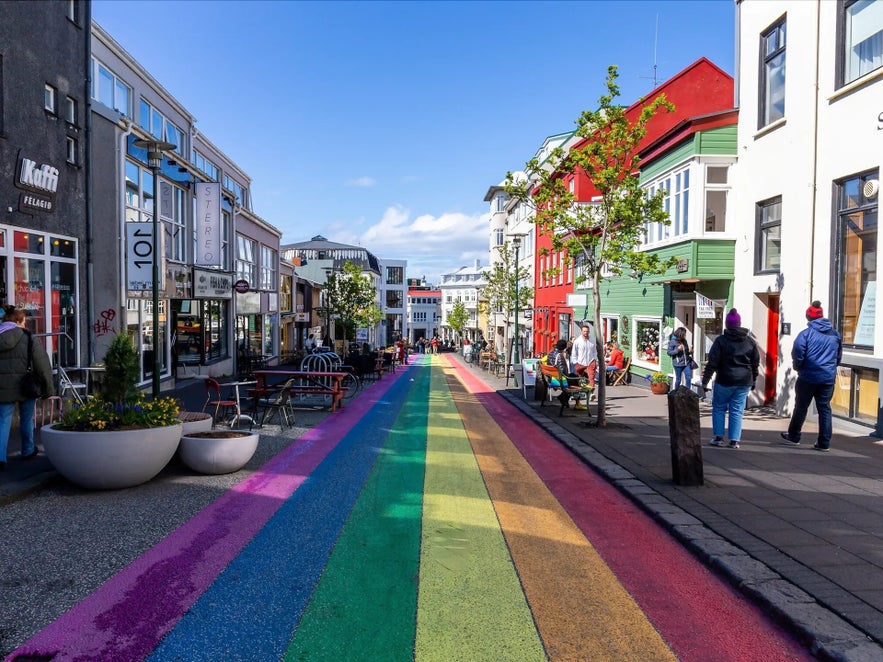 Where Laugavegur meets Skolavordustigur, Bankastraeti (Bank Street) begins. Its namesake is The National Bank of Iceland (Landsbankinn), which began its operations at Bankastraeti 3 in 1886.
Where Laugavegur meets Skolavordustigur, Bankastraeti (Bank Street) begins. Its namesake is The National Bank of Iceland (Landsbankinn), which began its operations at Bankastraeti 3 in 1886.
Today, Reykjavik’s business district is located in Borgartun, while Bankastraeti serves as a natural extension of Laugavegur, consisting mostly of shops and restaurants.
Past the intersection of Laekjargata Street, the old canal street, Austurstraeti connects the central artery to the Kvosin Downtown Hotel and the Old Harbour.
The street contains most of the different Icelandic architectural styles. It includes everything from the old timber houses of the merchant era and the country’s first concrete buildings to large modern glass and steel structures.
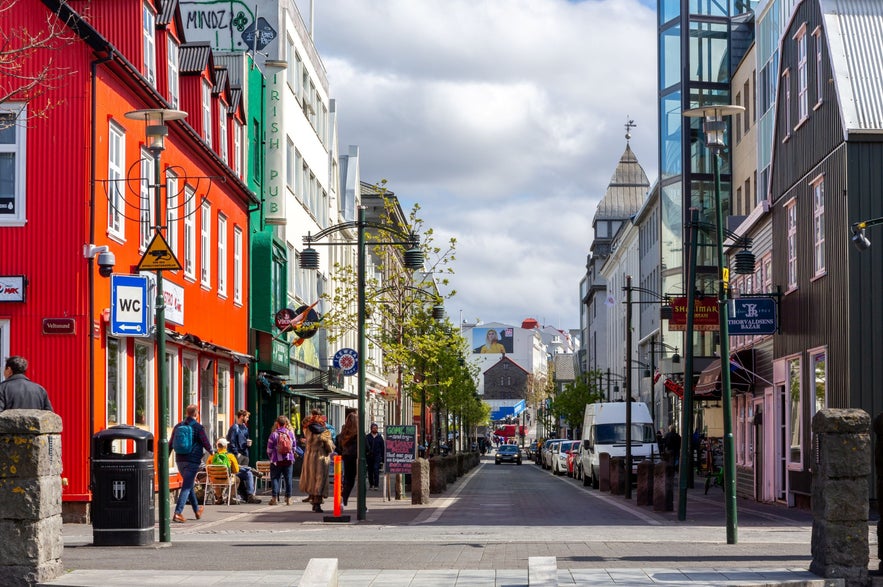
Guðjón Samúelsson will come up many times throughout this guide, as he has designed many of Central Reykjavik's most iconic buildings.
You’ll find one of Samuelsson’s earliest works at Austurstraeti 16 — the largest building in Reykjavik at the time of its construction in 1916. It has served as the headquarters for both The National Bank and the Icelandic Freemasons.
Today, the restaurant Apotek Kitchen + Bar is on the ground floor of this grand concrete structure, named after the city pharmacy that operated there from 1930 to 1999. It's one of the nicest wining and dining locations in Reykjavik, offering a mix of Icelandic and European flavors with expertly crafted cocktails. A visit here is highly recommended!
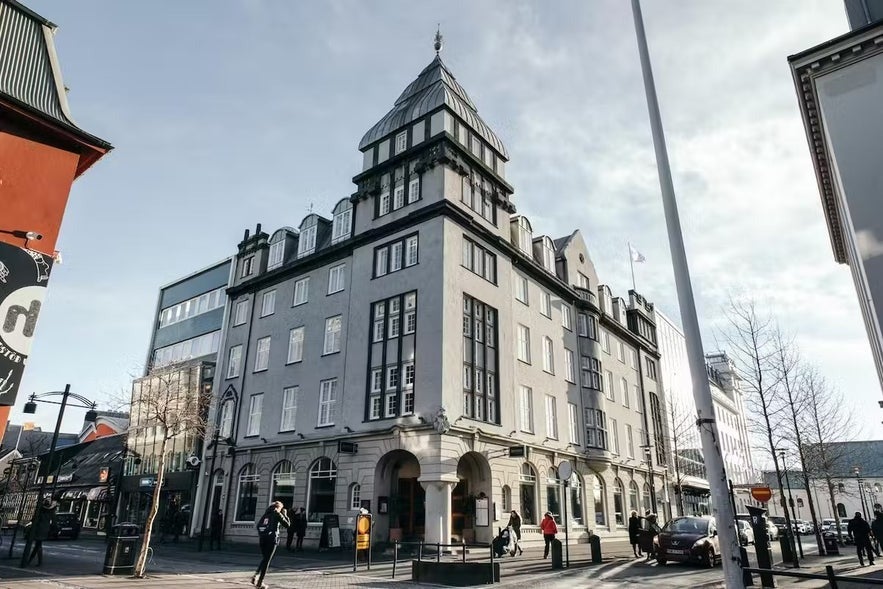 Additionally, the building is home to the Apotek Hotel, a luxurious boutique stay that perfectly complements the restaurant's elegance, making it an excellent choice for visitors looking for both comfort and convenience in the heart of Reykjavik.
Additionally, the building is home to the Apotek Hotel, a luxurious boutique stay that perfectly complements the restaurant's elegance, making it an excellent choice for visitors looking for both comfort and convenience in the heart of Reykjavik.
Another beautiful building of interest is Hressingarskalinn, often called "Hresso" at Austurstraeti 20. A newly renovated restaurant and a bar, this timber lodge from the early 1800s was the home of county deputy Árni Thorsteinson.
Hverfisgata and Skulagata Streets
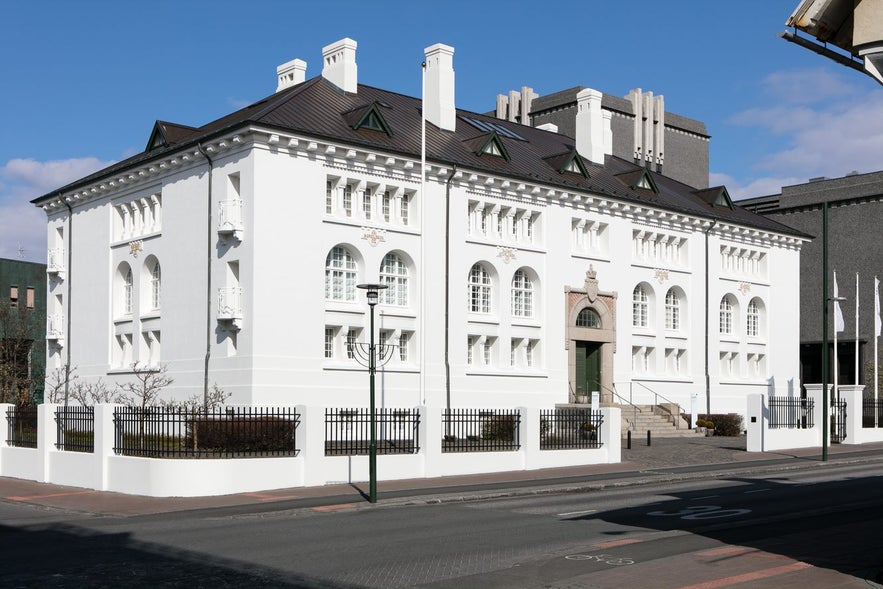
Hverfisgata Street is one of Reykjavik’s key streets, stretching from the Hlemmur Square down to Laekjartorg Square. Although it runs parallel to the main shopping street, Laugavegur, and is home to several landmark buildings, Hverfisgata was often overlooked by locals.
In recent years, however, the street has undergone a vibrant transformation with small boutiques, cozy cafés, and trendy restaurants popping up. This has made it a must-see destination full of hidden gems and revived charm.
Hverfisgata deserved this long-awaited makeover, given its array of marvelous and classical buildings. The dominant example would be the grand National Theatre of Iceland, designed by Guðjón Samúelsson, and the House of Collections, also known as "Safnahúsið," which is pictured above. It's now part of the National Gallery of Iceland and well worth the visit.
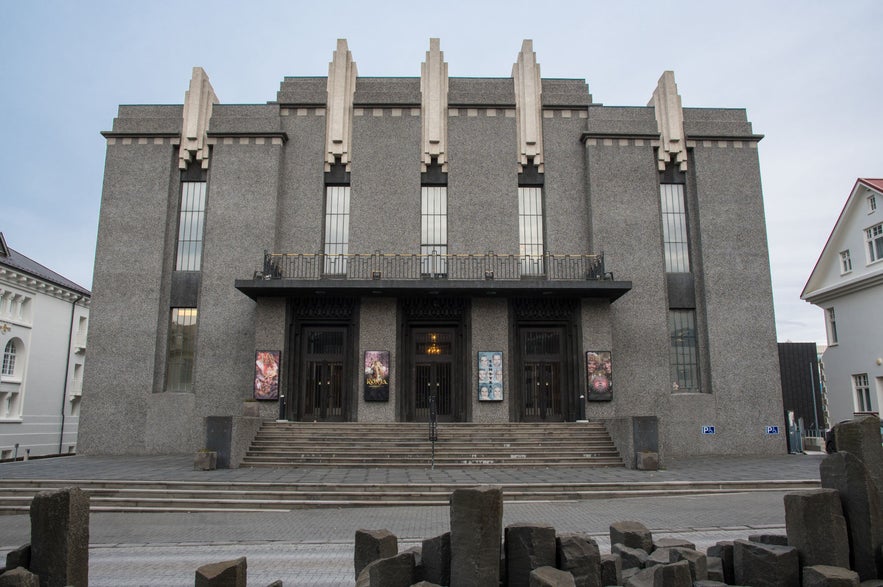
There's plenty more in the area to enjoy than history and grand old houses. At Hverfisgata 12, you'll find Röntgen, a local favorite bar and club, located in a beautiful four-story building from 1910.
As you groove on the dance floor during a good night out, you might notice the floorboards joining in — sometimes it feels like this old building is dancing along with you, a testament to how it has stood the test of time.
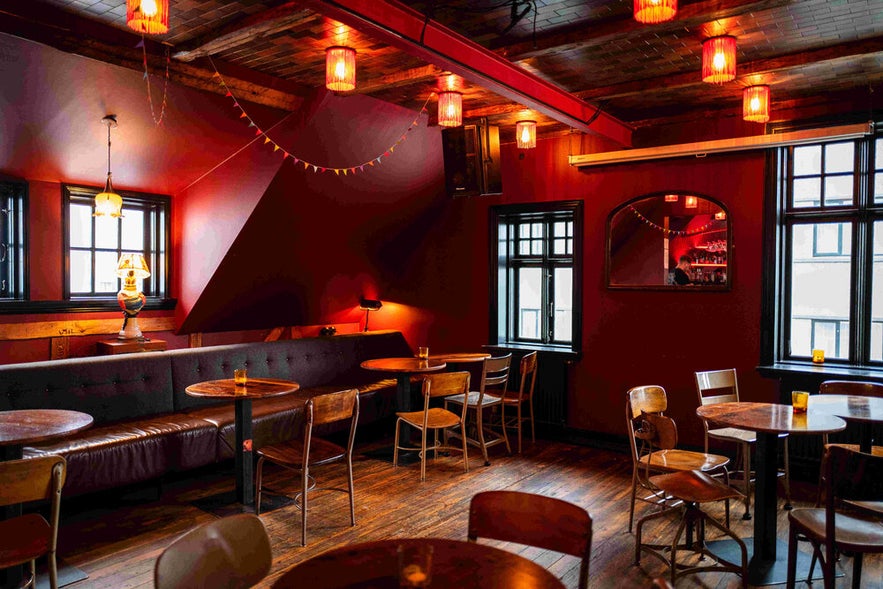 Walk a bit further, and you'll reach the independent cinema house Bio Paradis — the successor of movie theater Regnboginn, which ran from 1977 to 2010.
Walk a bit further, and you'll reach the independent cinema house Bio Paradis — the successor of movie theater Regnboginn, which ran from 1977 to 2010.
In Hverfisgata, you can enjoy a meal at the amazing Indian restaurant Austur-India Felagid before catching a live jazz show at KEX Hostel, which is housed in a renovated biscuit factory at Skulagata 28.
Hlemmur and Nordurmyri Streets
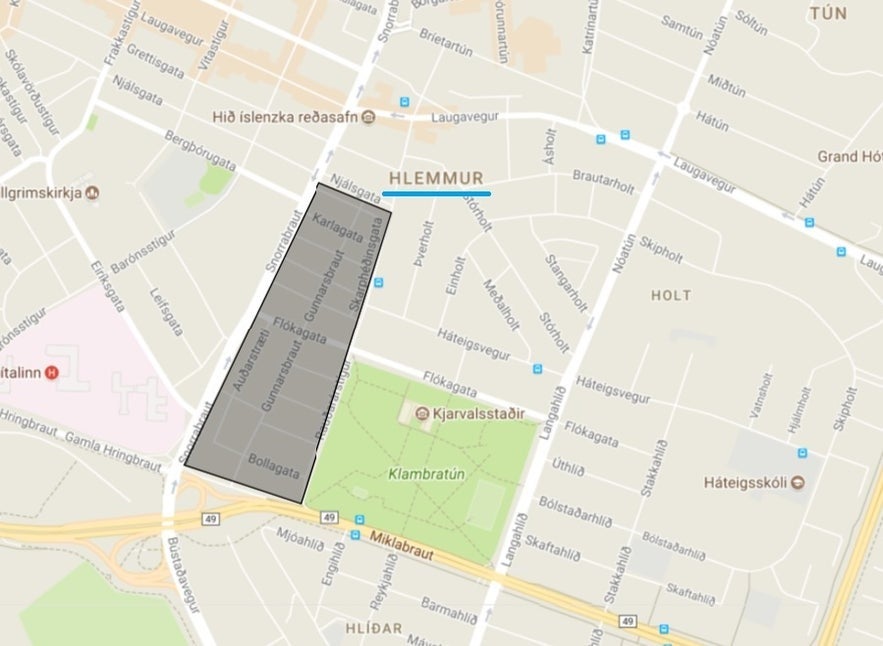 Let’s move onto Reykjavik 105 on the edge of downtown. Hlemmur, Reykjavik's central bus terminal, marks the spot where many people feel Laugavegur unofficially ends, although the street technically reaches just over half a mile east (one kilometer).
Let’s move onto Reykjavik 105 on the edge of downtown. Hlemmur, Reykjavik's central bus terminal, marks the spot where many people feel Laugavegur unofficially ends, although the street technically reaches just over half a mile east (one kilometer).
Hlemmur is named after a small arch that used to bridge Raudara (Red River) in old Reykjavik. The river is no longer there, but you can follow Raudararstigur (Red River Road) past the favored local record store Lucky Records, and the Jörgensen Kitchen & Bar restaurant.
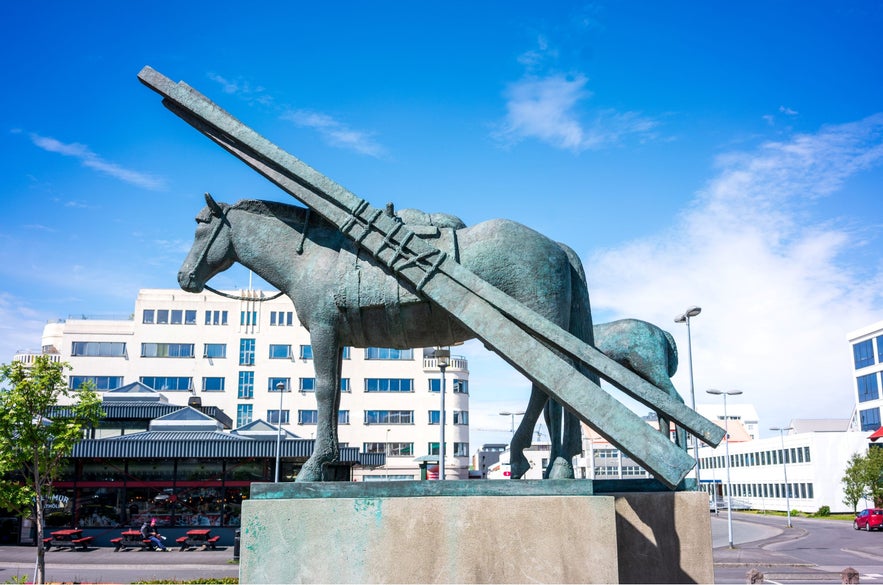 For decades, Hlemmur served as a second home to Reykjavik's outcasts. Because of the terminal’s central location, it sheltered those with nowhere else to go, and in the early 1980s, the spot also functioned as a haven for the young runaways of the punk generation.
For decades, Hlemmur served as a second home to Reykjavik's outcasts. Because of the terminal’s central location, it sheltered those with nowhere else to go, and in the early 1980s, the spot also functioned as a haven for the young runaways of the punk generation.
For decades, Hlemmur was a cultural hub that seemed stuck in time — rundown and frequented by the city's marginalized communities.
However, in 2017, Hlemmur was transformed into Hlemmur Matholl, one of the top food halls in Reykjavik. It has since become a beloved destination for locals and visitors, offering a variety of culinary delights in this trendy restored space.
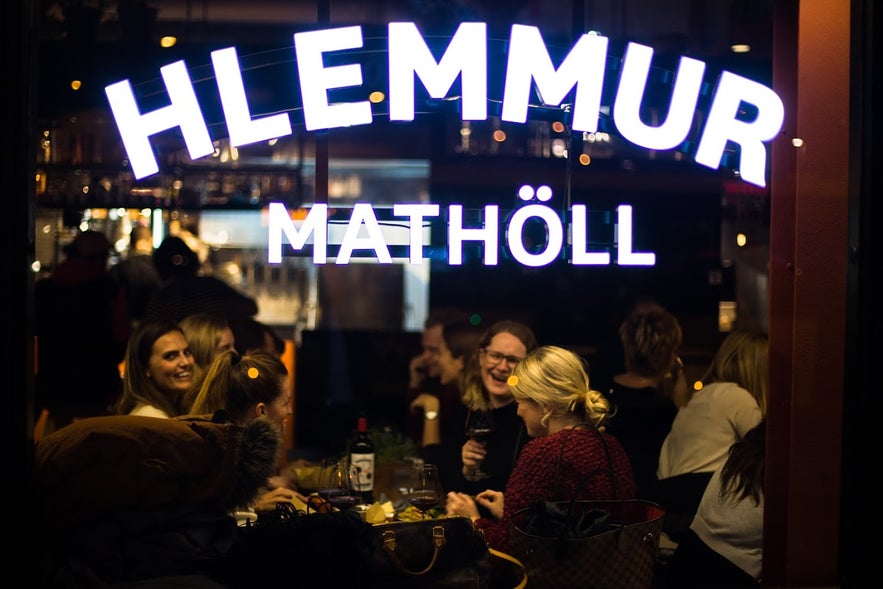 Just to your right, you’ll find Nordurmyri, one of the most popular residential neighborhoods.
Just to your right, you’ll find Nordurmyri, one of the most popular residential neighborhoods.
The name of the Nordurmyri area, marked by Miklabraut in the South and Snorrabraut in the West, translates to “Swamp of the North,” referring to the old swampland that used to cover the area.
Most of the houses here were built in the 1930s, and the streets are named after characters from the Icelandic Sagas Njala and Laxdaela, as well as the Book of Settlement (Landnamabok).
All the houses' gardens face south, providing optimal sunshine and ample opportunity for residents to grow various plants and flowers.
Throughout the years, the neighborhood has been known to harbor an abundance of artists, scholars, and musicians. Nordurmyri occasionally hosts lively block parties, where the streets are decorated, and live music, markets, and workshops pop up on a selected summer’s day.
Skolavordustigur Street and Thingholt
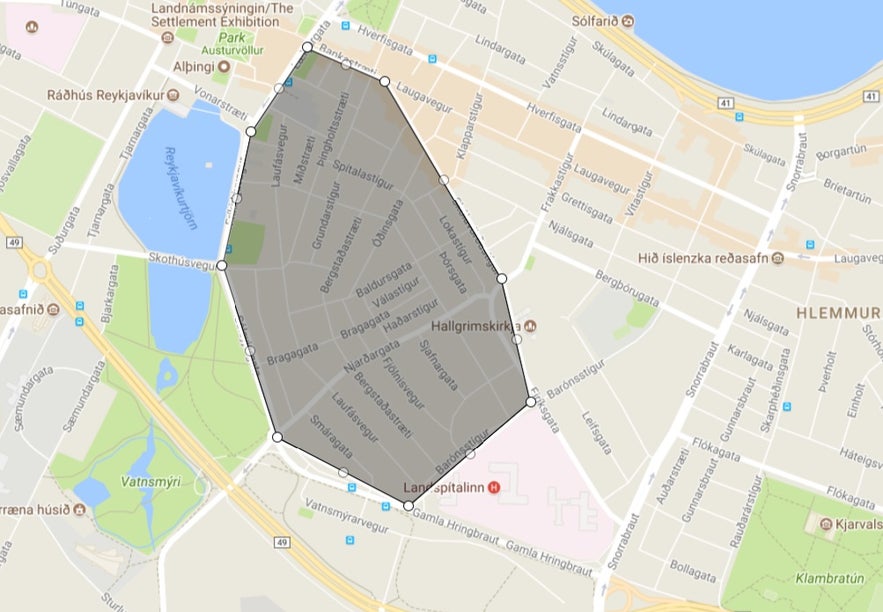
One of Reykjavik's most iconic landmarks is undoubtedly Hallgrimskirkja Church, a monumental triumph of Icelandic architecture perched atop Skolavorduhaedi Hill. The hill's name predates the church by about two hundred years.
In front of Hallgrimskirkja stands a statue of the explorer Leifur Eiríksson, marking the spot where a stone tower known as Skolavardan (the School Cairn) once stood — a monument built by students in the 1700s as part of a homecoming ritual.
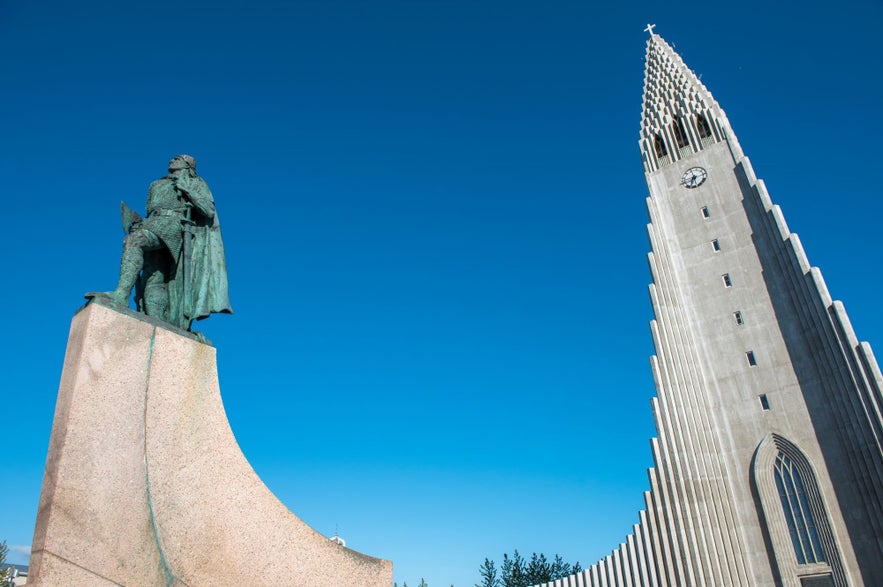
The tower’s latest rendition, constructed in 1868 and commissioned by Governor Arni Thorsteinsson, could historically be called Reykjavik’s very first man-made landmark.
The pathway leading up to the tower became known as Skolavordustigur (School Cairn Road), but the tower itself was demolished in time for the 1000th anniversary of Alþingi, Iceland's legislative body.
To mark the occasion, the United States gifted Iceland a grand statue of the explorer Leifur Eiríksson, which now stands proudly on the former tower site, facing Skolavordustigur Street.
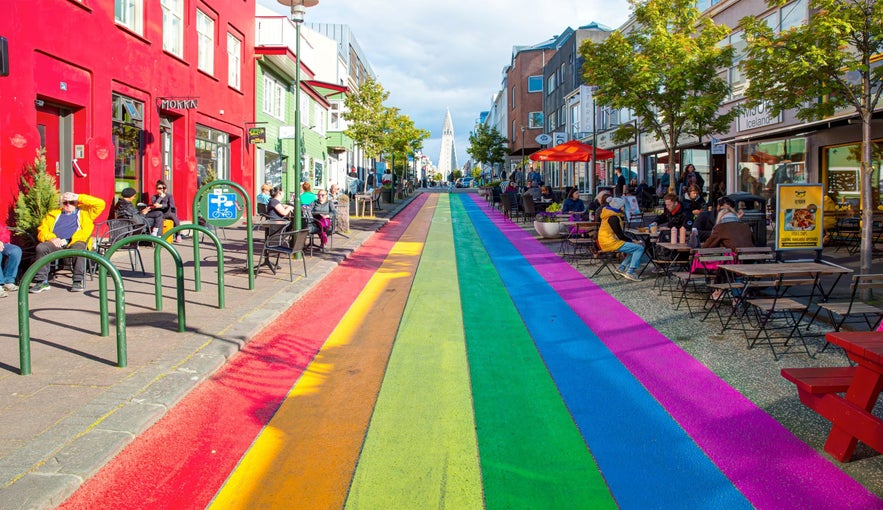
Today, Skolavordustigur is one of the most popular streets in the city. Famously, at the base of Skolavordustigur, you'll find the vibrant rainbow road, a colorful stretch of pavement painted to celebrate diversity and inclusivity.
This iconic pathway has become a beloved symbol of Reykjavik’s open-minded spirit and the gay culture in Iceland. Both locals and visitors feel drawn to its bright colors, which add a splash of joy to the city.
Along the street, you'll find numerous restaurants, boutiques, design shops, and cafes. Among the many dining options, Kol Restaurant is a local favorite for fine dining. It's also the sister restaurant to the Kol Delí, a great spot for a quick bite to eat on the go.
Some of the street's most historic buildings still stand there, such as Hegningarhusid, Iceland's oldest prison.
To the left of Skolavorduhaed Hill stretches the residential neighborhood Thingholtin, dotted with old and colorful houses of timber and corrugated iron.
Take a stroll down the district's main road, Midstraeti, to see the preserved 19th-century houses that have been home to Iceland's most distinguished intellectuals and poets.
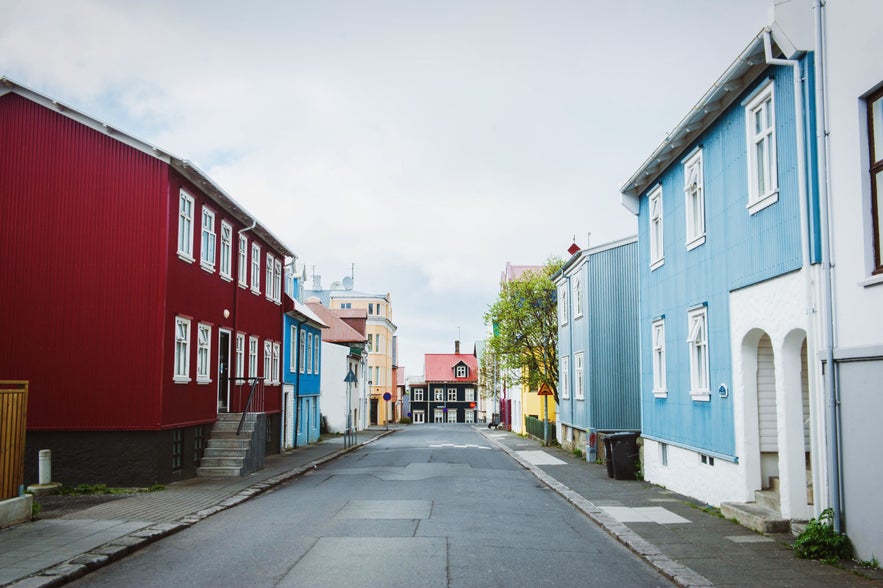 The area's main attraction is arguably Menntaskolinn i Reykjavik, the city’s oldest junior college and a landmark of the city landscape. The building was erected in 1846, but the school itself dates back as early as 1056.
The area's main attraction is arguably Menntaskolinn i Reykjavik, the city’s oldest junior college and a landmark of the city landscape. The building was erected in 1846, but the school itself dates back as early as 1056.
For those looking to stay in the area, Thingholt by Center Hotels offers a stylish and comfortable boutique experience just steps away from this historic landmark.
Last but not least is the Einar Jonsson Museum and Sculpture Garden, an inner-city gem overlooked by many of Reykjavik's visitors.
Einar Jonsson is Iceland’s most celebrated sculptor, having produced countless masterpieces, such as the Ingólfur Arnarson statue on Arnarholl Hill. The museum is right next to Hallgrimskirkja Church.
Grjotathorpid and Kvosin
The neighborhood of Grjotathorpid is home to some of the oldest houses in Reykjavik. Because it was constructed before a city planning committee existed, it has crisscrossing streets and scattered houses, which just adds to its charm and appeal.
Like Skuggi Farm and the Skuggahverfi District, the area began developing around a small farmstead called Grjotid (The Rock) in the mid-18th century and later became known as Grjotathorpid (Rock Village).
A landmark in the district is Unuhus, located at Gardastraeti 15. The house was named after Una Gísladóttir, a revered friend to the poor who ran a bargain-priced guesthouse at the location.
At the beginning of the 20th century, Una's house had become a cultural center. It had regulars, like writers Þórbergur Þórðarson and Halldór Laxness — Iceland's first Nobel prize winner in literature.
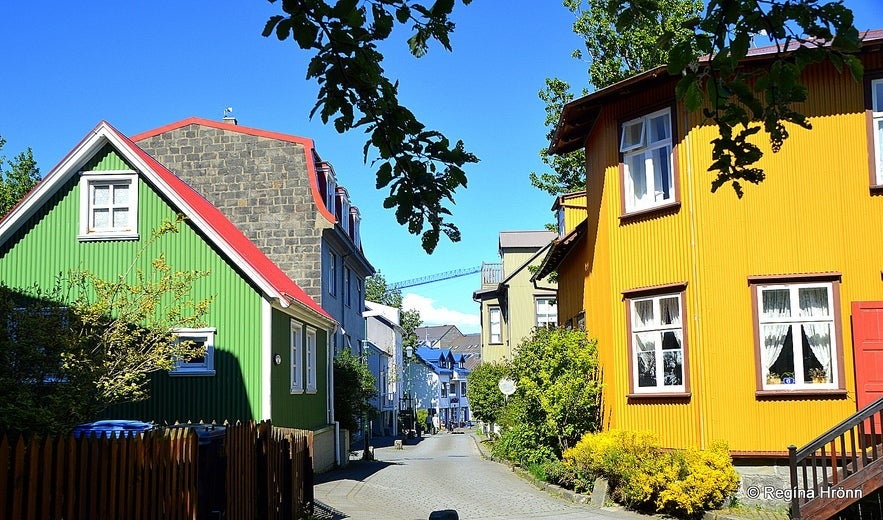
Grjotathorpid begins by Adalstraeti (Main Street), which also marks the outset of the Kvosin Downtown Hotel. At Adalstraeti 10, the oldest house in central Reykjavik still stands, constructed in 1762 as part of Sheriff Skúli Magnússon's industrialization efforts.
In 2001 a 10th Century Viking longhouse was unearthed at Adalstraeti 16 and is now open to the public as the centerpiece of the Adalstraeti and Settlement Exhibition.
Since the development of Kvosin constitutes both the beginning of Iceland's settlement and Reykjavik's industrialization, the district is known as the birthplace of Reykjavik.
Kvosin is bordered by Adalstraeti, Laekjargata and Lake Tjornin. Today, Tjornin serves as one of the most scenic spots in the central capital and is home to Reykjavik's City Hall.
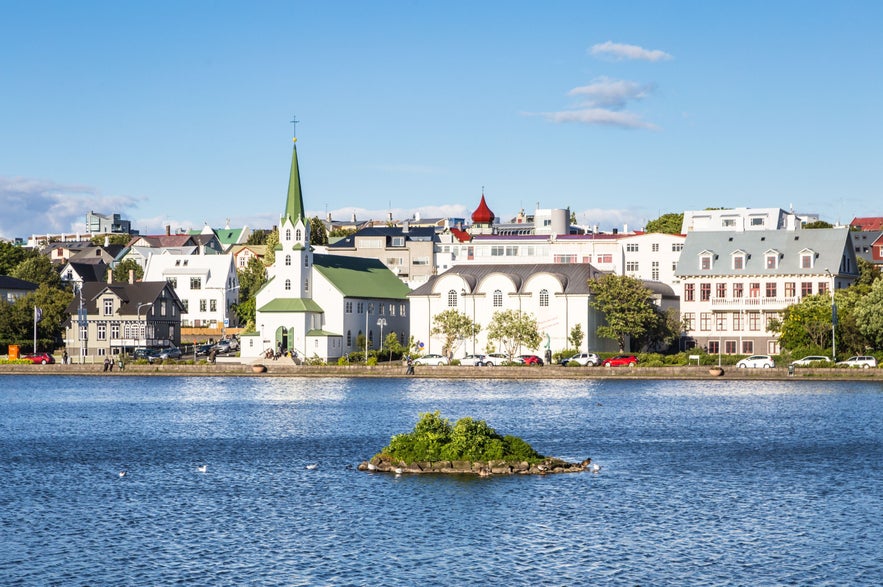
All around this idyllic bird colony, there's plenty of beauty to behold — from the old homes that dot the eastern shore on Tjarnargata (Pond Street) to the lush public gardens of Hljomskalagardur and Hallargardur.
You'll also find several museums near the lake, including the National Museum of Iceland and the Reykjavik Art Museum. And you can get unlimited access to the city's many museums with the Reykjavik City Card!
Harpa and The Old Harbour

For a nation historically dependent on fishing, the charming and colorful Reykjavik Old Harbor, known to the locals as Reykjavikurhofn, was originally a natural inlet. It became circled by a maze of wooden docks over time.
However, these were only suited for smaller vessels, and larger ships had to make anchors far away from the shoreline.
The construction of a proper harbor sparked social debate for decades. But the argument was settled after a great storm destroyed a large group of offshore ships in 1910.
Following the disaster, the government agreed to fund the building of a harbor, and in 1913, large ships could finally dock in Reykjavik.
The building of the new and improved docks was the greatest industrial project the country had seen. The Reykjavik Harbor would function as the capital's official shipping port until the 1960s when the larger Sundahofn harbor was constructed.
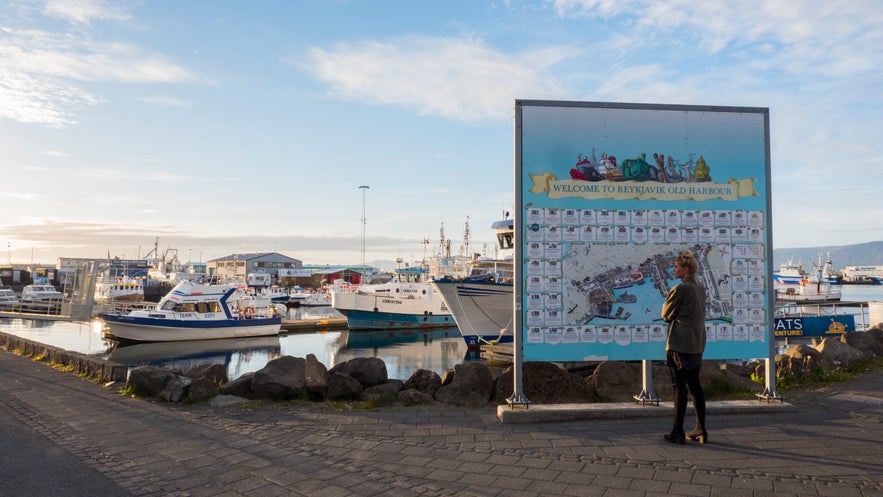 For decades after this shift, independent fishers and boat owners mainly used the Old Harbour. It also served as the operational center for the Coast Guard of Iceland.
For decades after this shift, independent fishers and boat owners mainly used the Old Harbour. It also served as the operational center for the Coast Guard of Iceland.
Today, the harbor is teeming with life. Along the harbor, vibrantly blue industrial sheds from the 1930s now house seafood restaurants and cafes, many cultural attractions, and whale-watching tours that set out daily from the docks.
We recommend visiting the Reykjavik Maritime Museum in the Grandi Area — a fantastic way to learn about the docks and how the ocean shaped Iceland.
But, one development, above all others, constitutes the harbor's greatest makeover since its original construction.
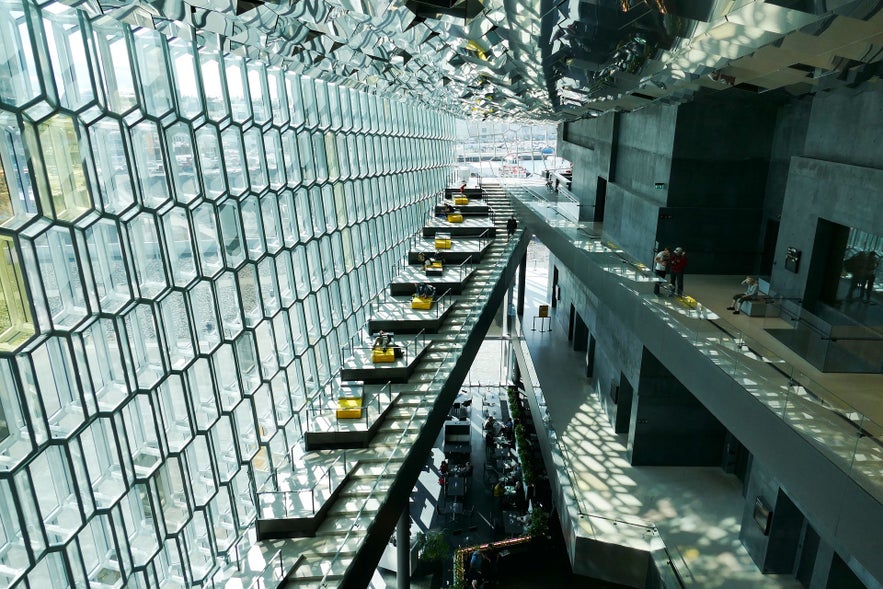
Completed in 2011, the Harpa Concert Hall and Conference Center remains one of Reykjavik's most iconic landmarks. Local artist Ólafur Elíasson designed it in collaboration with Danish firm Henning Larsen Architects.
Harpa continues to be a centerpiece of the city’s cultural life, hosting everything from concerts and conferences to exhibitions and festivals. It is also home to Volcano Express, an immersive experience that takes visitors on a thrilling journey through Iceland’s volcanic history.
In addition to the grand concert hall, the original plans for the area included a World Trade Center, a hotel, apartment complexes, shops, and a large car park. However, the 2008 financial crisis halted these ambitious developments.
That said, the idea of building a national concert hall had been in discussion since the 1880s, and despite financial challenges, the Icelandic government chose to see the project through. The result was an architectural landmark that quickly became a cherished part of Reykjavik’s cultural scene.
The building boasts a facade of over 700 glass panels designed by the genius geometrist Einar Þorsteinn Ásgeirsson. Each panel has its unique shape and LED lights that offer spectacular light shows on dark winter nights.
Today, Harpan hosts the Icelandic Symphony Orchestra, as well as an array of exhibitions, concerts, and cultural events.
Gamli Vesturbaer and Holavallagardur
Vesturbaer is a large district in Reykjavik that stretches out from the center to the outskirts of the Seltjarnarnes Township. The name translates to West Town, while the area north of Hringbraut Road is called Gamli Vesturbaerinn (Old West Town), seen on the map above.
Much like Grjotathorpid, the district historically belonged to the lower working classes, but today, such class distinctions are mostly gone. Vesturbaer counts as a suburban part of 101 Reykjavik.
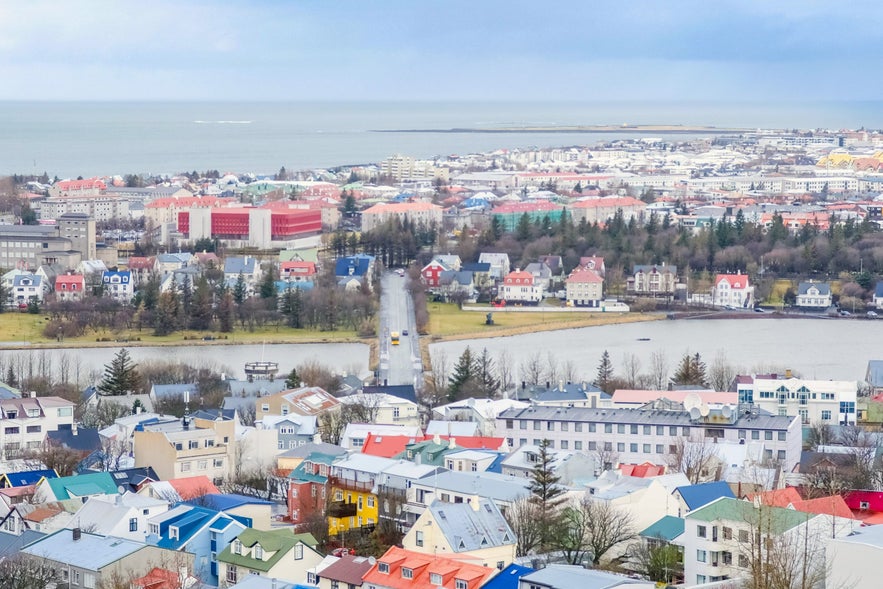
A lovely spot to visit in the area is Landakot, a lush green hill steeped in Iceland's Catholic history. The site’s origins date back to 1864 when Catholic priests from France built a small chapel next to their farm.
A few years later, the chapel was replaced by a wooden church, marking the beginning of this historic site.
Then after World War I, the Catholic Church in Iceland felt the need for a greater house of worship. Architect Guðjón Samúelsson was yet again perfect for the job, designing the glorious new-gothic Landakotskirkja Church in 1929.
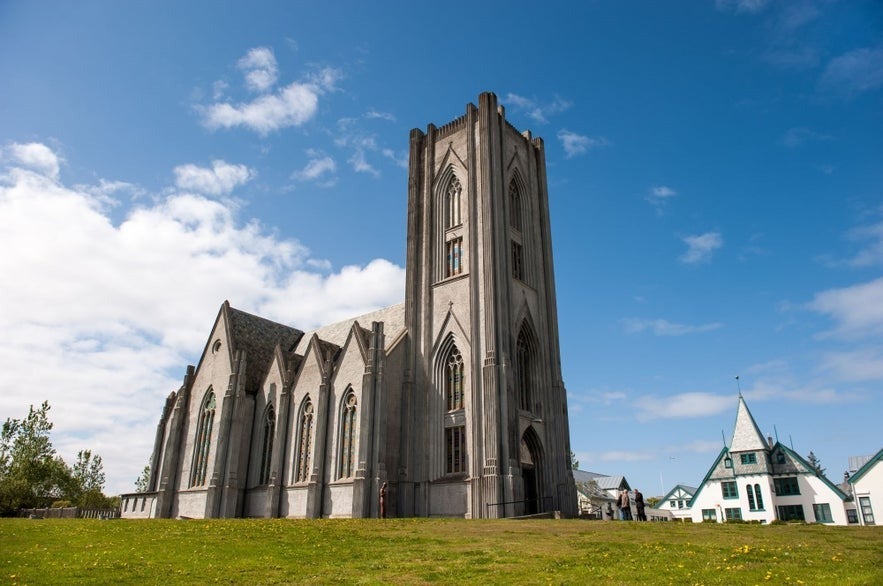
Another notable monument in the area is Landakotsspitali Hospital, built in 1902. It was a time when the city needed a new health institution but was out of funds, so Catholics backed the project with financial support from Europe.
The state eventually took over administrating the hospital, establishing Landsspitalinn (The National University Hospital of Iceland) in 1930.
Nesting between Landakot Church and Lake Tjornin, you'll find a particularly favored spot in the central capital. Holavallagardur is a 19th-century cemetery, rightfully voted as one of Europe's loveliest by National Geographic in 2014.
The park is one of the city’s most enchanting scenes. Tall and barren birch, willow, and spruce trees surround narrow pathways and ashen headstones.
The permanent residents of this urban thicket include Jón Sigurðsson, leader of Iceland’s independence movement; Hannes Hafsteinn, poet and political leader; and Bríet Bjarnhéðinsdóttir, the forerunner of women’s suffrage in Iceland.
Take a romantic stroll through this bewitching old graveyard and notice how the bustle of the capital stifles down. Travel back in time among some of the most fondly remembered residents of Reykjavik City.
With 101 Reykjavik's settlement history, trading post origins, monumental dwellings, and cultural allure, it’s no wonder that the downtown area is Iceland’s most popular area.
Businesses and individuals also tend to choose the walkable city center as their ideal location. The area offers a less car-dependent, more urban lifestyle that attracts more than just the young.
The incredible number of visitors may put downtown districts under pressure, but they also make the capital more vibrant than ever before.
When visiting the city center, acquaint yourself with the local culture. Try local businesses over international chains and engage with the environment at hand.
Not only will you be supporting the local way of life, you’ll obtain a more authentic and gratifying experience throughout your stay.
The History and Evolution of Reykjavik
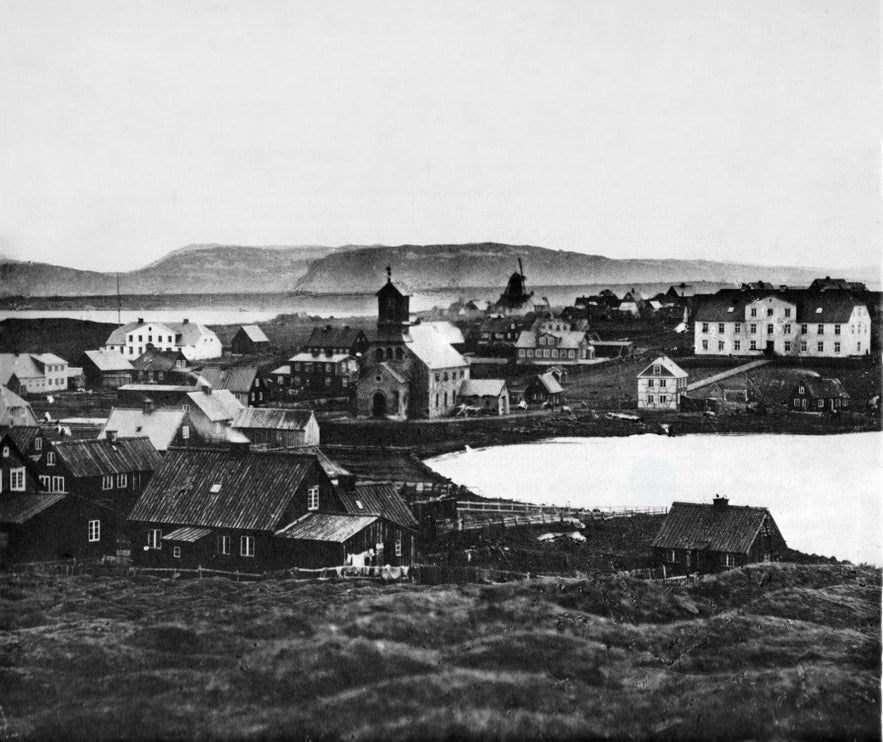
According to legend, Iceland's first settler, Ingólfur Arnarson, threw his high seat pillars into the sea upon first arriving at the island's shores around 870 AD and promised the gods to settle where they eventually drifted ashore.
It took Ingólfur and his men four years to locate the pillars. The following summer, they built their farmstead in the place he named Reykjavik, the Bay of Smoke.
Reykjavik, as we know it today, started growing around its harbor in the 18th century, from where it stretched out to different cardinal directions. The Old Harbour and Kvosin Downtown Hotel are where it all began.
There, commerce and trade were centralized, and consequently, these two neighborhoods became Midbaerinn or the city center.
Through this territory, the canal of Laekjargata Street served as the border between the trading center and the countryside.
The area west of the canal became known as Vesturbaer (West Town), while the eastern section was named Austurbaer (East Town). There, different neighborhoods arose and evolved.
The central port districts and Austurbaer's Thingholtin became homes to merchants and business owners. Meanwhile, neighborhoods such as Grjotathorpid and Vesturbaer housed the working class.
Today, the city of Reykjavik has branched out much further than these fundamental distinctions suggest. Therefore, these first suburbs are now considered central.
The old class divide between districts still lingers in some ways, but overall, the central city is home to people from all layers of society.
101 Reykjavik
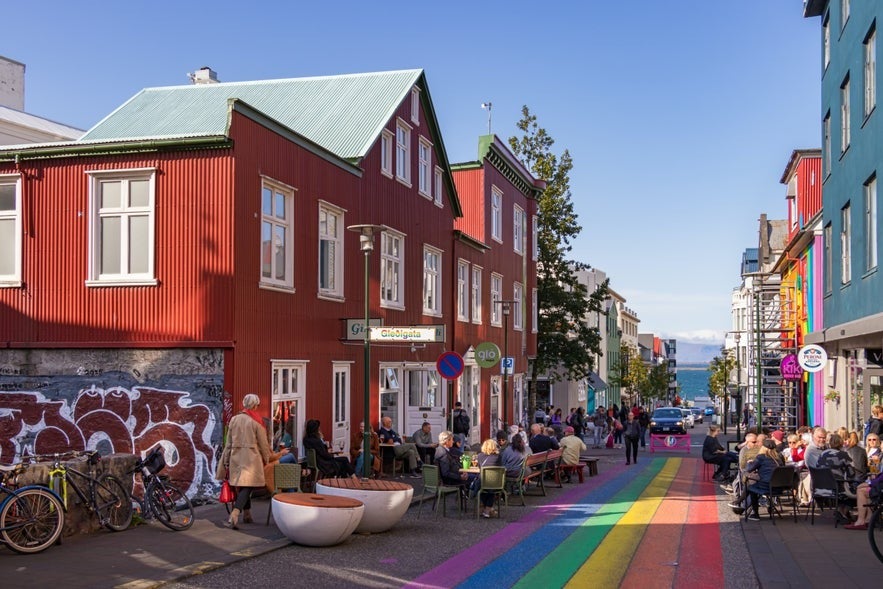 101 is the postal code that unifies the districts that make up the downtown area. Although the neighboring communities in codes 105 and 107 are suburban, you can easily access them by foot from the center.
101 is the postal code that unifies the districts that make up the downtown area. Although the neighboring communities in codes 105 and 107 are suburban, you can easily access them by foot from the center.
As with most urban areas, the population density is greatest in this original part of the city. For the past century, downtown Reykjavik has nursed its very own native, the people we lovingly refer to as "midbaejarrotta" or the "Downtown Rat."
As nasty as that nickname might sound, it's used in a friendly, teasing way. Most of the central capital’s permanent residents wear the title with pride.
While the center is home to an incredibly diverse flock that is impossible to classify as a whole, it has predominantly been known to harbor bohemians, artists, musicians, and the eternally young.
The video at the top of this article shows the trailer for Icelandic director Baltasar Kormakur’s debut feature film, appropriately titled 101 Reykjavik.
This darkly satirical urban tale tells of a typical downtown rat, Hlynur, a 30-year-old slacker who lives with his mother and spends most of his waking hours getting drunk at Kaffibarinn Bar.
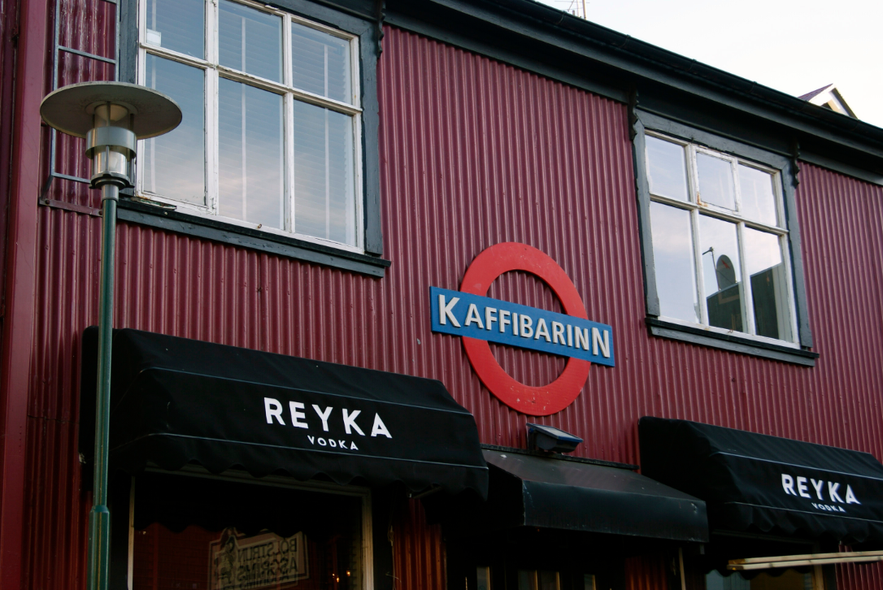
Although this borderline-depressed but beloved character doesn’t reflect all of the downtown residents, he’s based on a realistic stereotype. Because of high housing prices and service costs, the fly-by-night life is the reality of many inner-city dwellers.
In recent years, 101 Reykjavik has seen an influx of short-term rentals and rising rents. However, recent government regulations have sought to balance the residents’ needs with the booming tourism industry.
These efforts aim to preserve the character of the downtown area and ensure it remains accessible to locals.
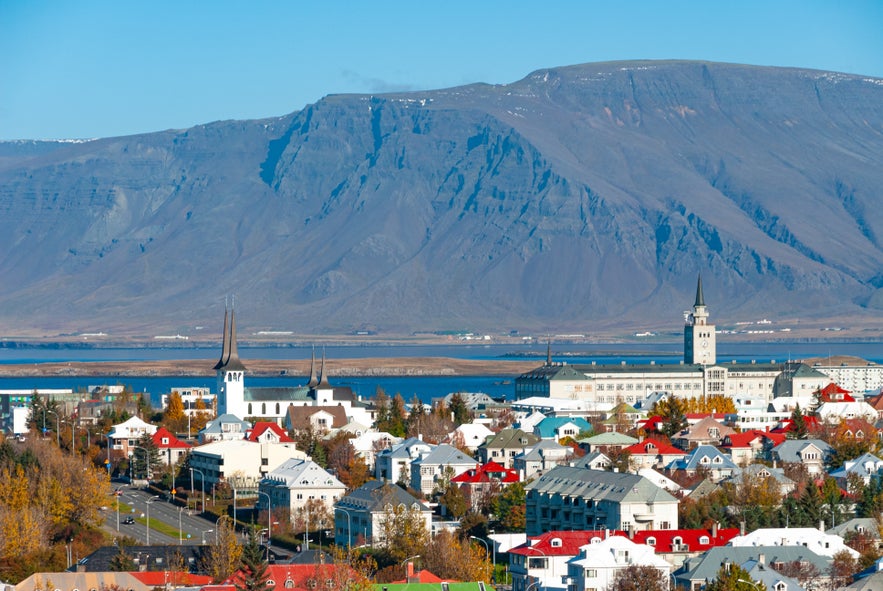
While it can be challenging to afford living in downtown Reykjavik, the benefits of residing in the heart of the city extend far beyond the corrugated iron roof over one's head, offering a lifestyle that simply isn’t available in the suburbs or anywhere else in the country.
FAQ About Reykjavik’s City Center
Here are some of the most common questions about downtown Reykjavik.
Is Reykjavik a Walkable City?
Yes, Reykjavik is highly walkable, with most attractions, shops, and restaurants located within the compact city center.
What Is the Main Tourist Street in Reykjavik?
Laugavegur is the main tourist street known for its shopping, dining, and vibrant nightlife.
What Is the Number One Attraction in Reykjavik, Iceland?
Hallgrimskirkja, the iconic church with panoramic city views, is Reykjavík’s top attraction.
What Are the Best Things To Do in Reykjavik City Center?
The best things to do in Reykjavik’s city center include exploring Laugavegur for shopping and dining, visiting Hallgrimskirkja for panoramic views, touring Harpa Concert Hall, relaxing at a cozy cafe, discovering Icelandic history at the National Museum, and enjoying the nightlife.
What to Do Near Reykjavik in One Day?
Explore Laugavegur, visit Hallgrimskirkja, tour Harpa Concert Hall, relax at a cafe, and soak in the Sky Lagoon or Blue Lagoon.
Explore Beyond Reykjavik with Tours Across Iceland
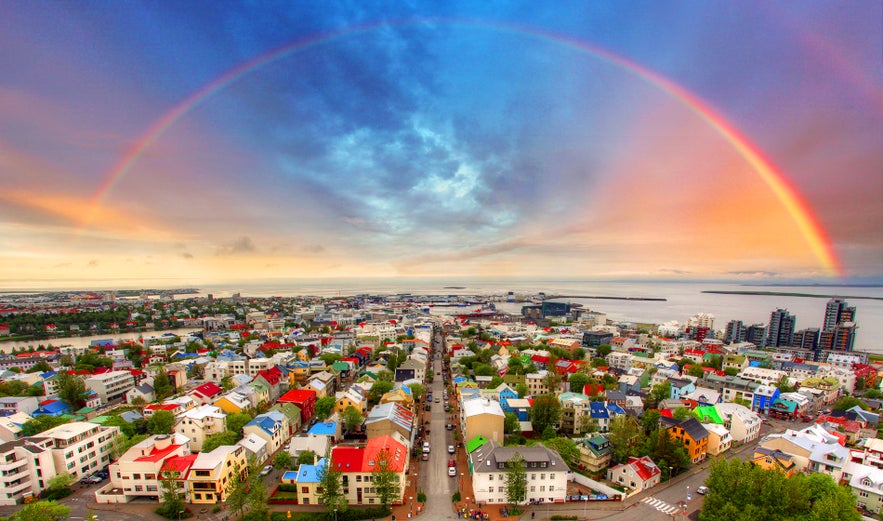 There are many exciting things to do in Reykjavik’s city center that blend history, culture, and modern attractions, making it a must-visit in Iceland. Its vibrant streets, eclectic shops, restaurants, and rich historical sites create an immersive experience that captures the city's essence.
There are many exciting things to do in Reykjavik’s city center that blend history, culture, and modern attractions, making it a must-visit in Iceland. Its vibrant streets, eclectic shops, restaurants, and rich historical sites create an immersive experience that captures the city's essence.
For those looking to venture beyond Iceland's capital, various tours provide exciting ways to experience the country's natural wonders. Day tours from Reykjavik allow visitors to explore more of Iceland.
We recommend this day tour around the Golden Circle and a trip along the South Coast, or enjoying adventures like volcano tours or northern lights hunting in winter.
Guided multi-day tours offer stress-free exploration with expert guides, while self-drive tours grant the freedom to discover Iceland’s landscapes at your own pace.
Regardless of your plans, Reykjavik is the perfect gateway to Iceland’s unforgettable experiences.
Have you explored downtown Reykjavik? What are your favorite spots and districts in postal code 101? Let us know in the comments section below!

